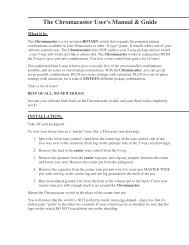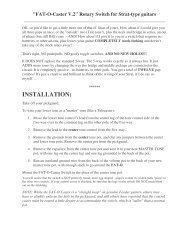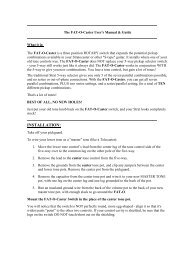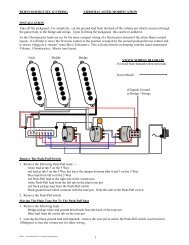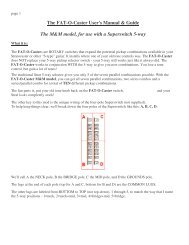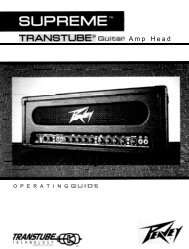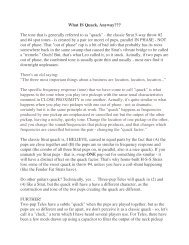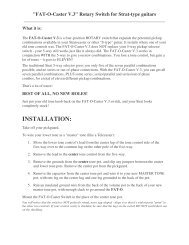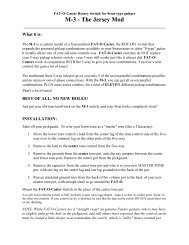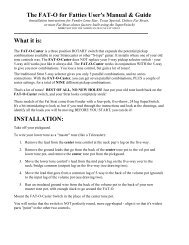A BRIEF DISCUSSION OF WIRING OPTIONS - Deaf Eddie
A BRIEF DISCUSSION OF WIRING OPTIONS - Deaf Eddie
A BRIEF DISCUSSION OF WIRING OPTIONS - Deaf Eddie
- No tags were found...
You also want an ePaper? Increase the reach of your titles
YUMPU automatically turns print PDFs into web optimized ePapers that Google loves.
IN AND OUT <strong>OF</strong> PHASE:Once we start talking about phasing, there is some confusion about calling the negativelead from the pup's coil the "ground" lead. This is sloppy shorthand, and we all do it.Every magnetic guitar pickup consists of a coil (or pair of coils) that has a "positive" anda "negative" lead. In guitar electronics shorthand, we usually refer to the positive lead asthe HOT lead, and the negative lead as the GROUND lead. This is all well and good mostof the time, because typically, the positive lead goes to the hot side of the guitar's circuit,and the negative lead goes to ground. But, when we talk about phase, suddenly the hot isconnected to the ground and vice-verse… what we really mean is that when wired out ofphase, the positive lead is connected to the guitar's ground, and the negative lead isconnected to the hot side of the guitar's circuit."In phase," which is what EVERYBODY uses, typically sounds sweet, and produces a"quack" or "cluck" tone. The drawings in the "Parallel and Series" document illustratesin-phase connections, because both of the coils' hot leads go to the hot side of the circuit,and the coils' ground leads go to the ground side of the circuit. Teles and Strats, Les Paulsand SG's, Fenders and Squires, Gibsons and Epiphones, Gretsch, PRS, etc… everybodyuses IN PHASE (and, almost always parallel).If one pickup is OUT <strong>OF</strong> PHASE with another, when both are played, a lot offrequencies are "cancelled out" of the tone. The positive voltage one pickup creates isnegated by the negative voltage the other creates. Usually, lots of the fundamental iscancelled out, and the only tones that "escape" to be heard are the tones that areharmonically different between the two pickups - so you usually get very thin and"nasally" tones. The more alike the two pickups sound individually, the thinner their outof phase combo will sound. This is why you seldom see a phase-reverse option on a Strat- the middle pickup is too similar in tone to the other two, and is too close to them towork well in parallel/out of phase - the tone produced is just too thin for mostapplications. There's a way around it… but, more on that later.This usually brings up the question, "What does ONE pickup sound like, out of phase?"Actually, one pickup can NOT be out of phase - phase is a relationship, and requiresTWO (or more) pickups to be on at the same time. If you are playing ONE pickupALONE, there is no difference in its tone if it is wired in phase or out of phase to theother pickups - the phase relationship is only revealed when pickups are playedTOGETHER.Phase reversal is usually implemented with a switch, rather than hard-wired. The additionof a simple DP/DT toggle or push/pull pot can give just about any two-pickup guitar thenew, biting tone of pickups played out of phase.



